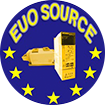20 PLC Commands Everyone Should Know
Programmable Logic Controllers (PLCs) are widely used in industrial automation to control and monitor machinery and processes. They are capable of executing various instructions to perform specific tasks. In this blog post, we will explore 20 commonly used PLC instructions and their functions.
1. Ladder Logic (LAD)
Ladder Logic is the most commonly used programming language for PLCs. It uses ladder-like diagrams to represent the control logic. Each rung of the ladder represents an instruction or a condition.
2. Timer (TON)
The Timer instruction is used to measure time intervals. It can be used to delay an action, control the duration of an operation, or trigger events based on time.
3. Counter (CTU)
The Counter instruction is used to count events or pulses. It can be used to keep track of the number of parts produced, monitor the speed of a conveyor belt, or control the number of cycles in a process.
4. Compare (CMP)
The Compare instruction is used to compare two values. It can be used to check if a condition is true or false, compare analog signals, or validate input values.
5. Math (MATH)
The Math instruction is used to perform mathematical operations. It can be used to add, subtract, multiply, or divide values, calculate averages, or perform complex calculations.
6. Move (MOV)
The Move instruction is used to transfer data between memory locations. It can be used to copy values, assign values to variables, or move data from one register to another.
7. Jump (JMP)
The Jump instruction is used to change the program execution flow. It can be used to skip certain sections of the program, repeat a sequence of instructions, or create loops.
8. Branch (BR)
The Branch instruction is used to create conditional branches in the program. It can be used to make decisions based on input conditions, control the flow of the program, or implement if-else statements.
9. Subroutine (JSR)
The Subroutine instruction is used to call a subroutine or a function. It can be used to modularize the program, reuse code, or perform repetitive tasks.
10. Data Manipulation (MOV)
The Data Manipulation instruction is used to manipulate data. It can be used to shift bits, rotate values, perform logical operations, or modify data formats.
11. Input (IN)
The Input instruction is used to read input signals from sensors or switches. It can be used to monitor the state of a machine, detect faults, or trigger events based on input conditions.
12. Output (OUT)
The Output instruction is used to control output devices such as motors, valves, or solenoids. It can be used to start or stop a motor, open or close a valve, or activate a device based on output conditions.
13. Set (SET)
The Set instruction is used to set a specific bit or flag. It can be used to enable or disable certain functions, activate alarms, or control the state of a system.
14. Reset (RST)
The Reset instruction is used to reset a specific bit or flag. It can be used to clear alarms, deactivate functions, or reset the state of a system.
15. Compare and Jump (CJ)
The Compare and Jump instruction is used to compare values and change the program execution flow based on the result. It can be used to implement if-else conditions, create decision trees, or perform complex branching.
16. Shift Register (SFR)
The Shift Register instruction is used to shift data through a series of memory locations. It can be used to implement shift registers, control sequences, or perform shift operations.
17. Analog Input (AIN)
The Analog Input instruction is used to read analog signals from sensors or transmitters. It can be used to measure temperature, pressure, level, or any other analog parameter.
18. Analog Output (AOUT)
The Analog Output instruction is used to control analog output devices such as variable frequency drives or proportional valves. It can be used to regulate motor speed, control fluid flow, or adjust process parameters.
19. Data Conversion (CONV)
The Data Conversion instruction is used to convert data from one format to another. It can be used to convert analog signals to digital values, scale values, or change data types.
20. Program Control (PC)
The Program Control instruction is used to control the execution of the program. It can be used to start or stop the program, enable or disable specific sections, or implement program control logic.
These are just a few examples of the many instructions available in PLC programming. Understanding and utilizing these instructions effectively can greatly enhance the functionality and efficiency of industrial automation systems.
